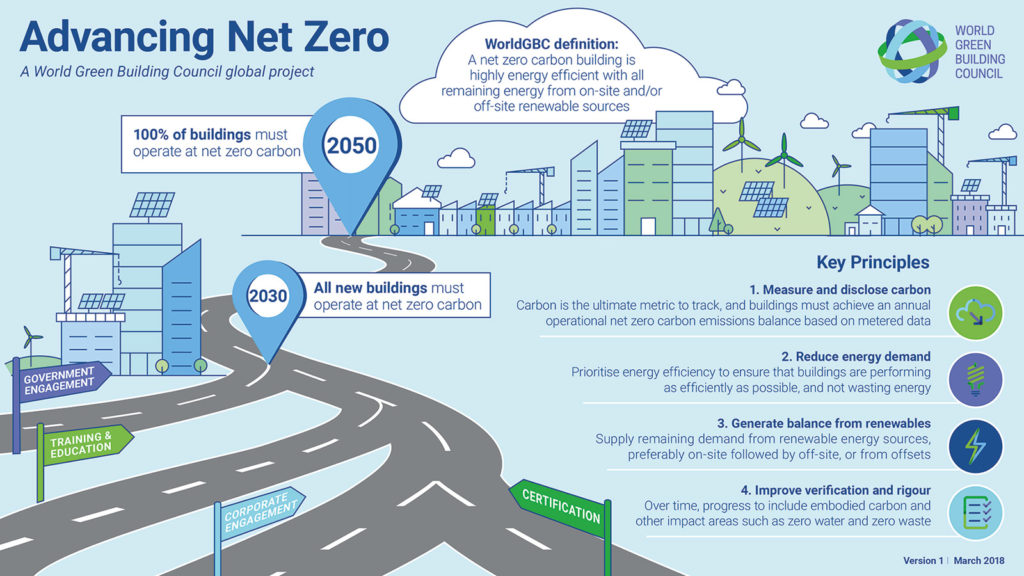Recent developments within the green building industry has placed a strong emphasis on net zero buildings. This focus can be credited to the World Green Building Council’s (WGBC) global project, Advancing Net Zero. Advancing Net Zero is a global project which aims to promote and support the transformation towards a completely zero carbon built environment, based on two main targets:
- All new buildings must operate at net zero carbon from 2030
- 100% of buildings must operate at net zero carbon by 2050
A net zero carbon building is a building that is highly energy efficient and fully powered from on-site and/or off-site renewable energy sources. The infographic below highlights the framework of this project along with four key principles that will help guide the stakeholder’s actions to achieve the target.
Net zero energy buildings are buildings that can generate 100% of their energy needs on-site. WGBC recognises that this is not possible in most situations. Thus, there has been a shift in the focus towards a building that is highly energy efficient and can supply their energy needs from renewable energy sources instead. These renewable energy generation may come from on-site and/ or off-site plants. It is with this target that WGBC believes is more appropriate and attainable for the mass scale to achieve the Paris Agreement levels of global emission reductions, and curb global greenhouse gas emissions so that temperature rise remains below 2 degrees Celsius.

The three core groups that WGBC outlines to achieve the end goal are businesses, government and non-governmental organisations. To date, several green building council has decided to participate in the project. Achieving these targets would help to ensure that the worst impacts of climate change are avoided, and bring about a number of other political and economic benefits.
We will be looking to explore more buildings that are classified as net zero, as well as other interesting developments within the Advancing Net Zero project in the future.

